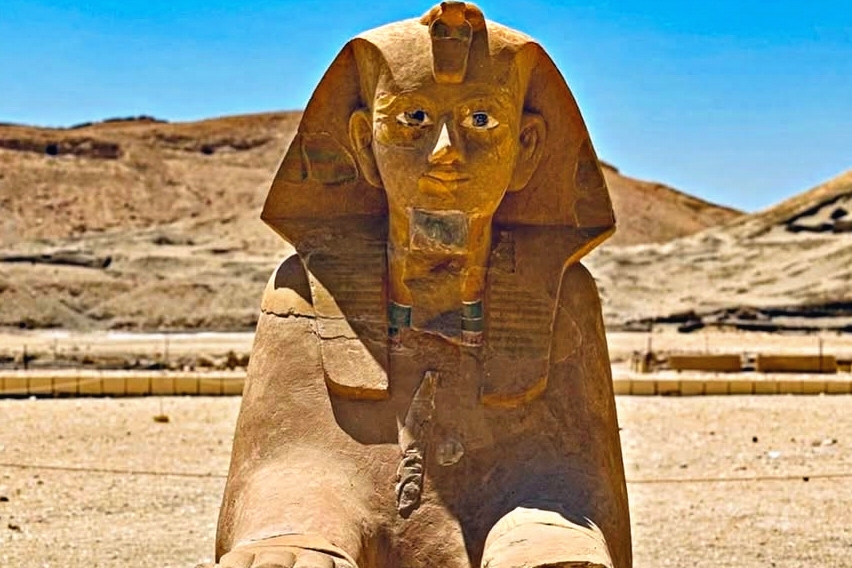Hatshepsut, one of ancient Egypt’s most fascinating and trailblazing figures, defied tradition to become one of its greatest rulers. Rising to power in a world where women were rarely seen as leaders, Hatshepsut carved a unique path, solidifying her legacy as a successful and innovative Pharaoh. Her reign marked an era of prosperity, artistic flourishing, and ambitious architectural achievements that continue to capture the imagination of historians and archaeologists.
This article delves into Hatshepsut’s life, reign, and enduring impact, highlighting why she is a significant figure in ancient history and why the name Hatshepsut remains synonymous with strength and innovation.
Hatshepsut’s Early Life and Background
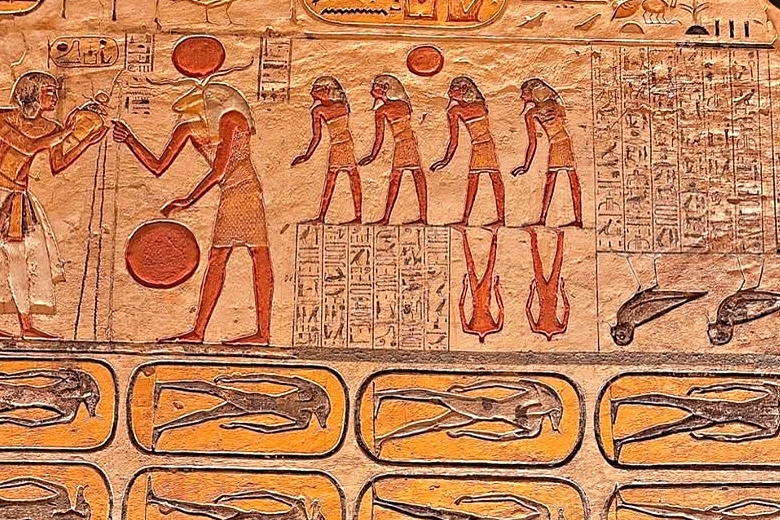
Hatshepsut was born around 1507 BCE, during the 18th Dynasty of Egypt, a period of rebirth and expansion after the tumultuous Second Intermediate Period. She was the daughter of Pharaoh Thutmose I and Queen Ahmose. As a princess, Hatshepsut grew up in a royal court that emphasized education and the divine right of the pharaohs.
Hatshepsut’s early years were shaped by her father’s military conquests and administrative reforms, which elevated Egypt’s status in the ancient world. She married her half-brother, Thutmose II, a common practice among Egyptian royalty to preserve dynastic purity. However, Thutmose II’s reign was relatively short, and his death set the stage for Hatshepsut’s unexpected rise to power.
The Path to Power
After Thutmose II’s death, his young son, Thutmose III, born to a lesser wife, was named the heir. However, as the boy was too young to rule independently, Hatshepsut initially acted as regent. This was not unusual in Egyptian history, but Hatshepsut’s next move was extraordinary—she declared herself Pharaoh.
Hatshepsut’s decision to assume full pharaonic powers was groundbreaking. She adopted all the regalia and titles of a male ruler, including wearing the traditional false beard associated with pharaohs. Hatshepsut even commissioned statues and reliefs depicting herself with a masculine physique to solidify her image as a legitimate ruler in the eyes of her people.
Her claim to the throne was bolstered by a clever narrative: she portrayed herself as being divinely chosen by the god Amun. Temple inscriptions describe how Amun visited her mother in the guise of Thutmose I, resulting in Hatshepsut’s divine conception. This narrative legitimized her reign and strengthened her position against potential rivals.
Achievements of Hatshepsut’s Reign
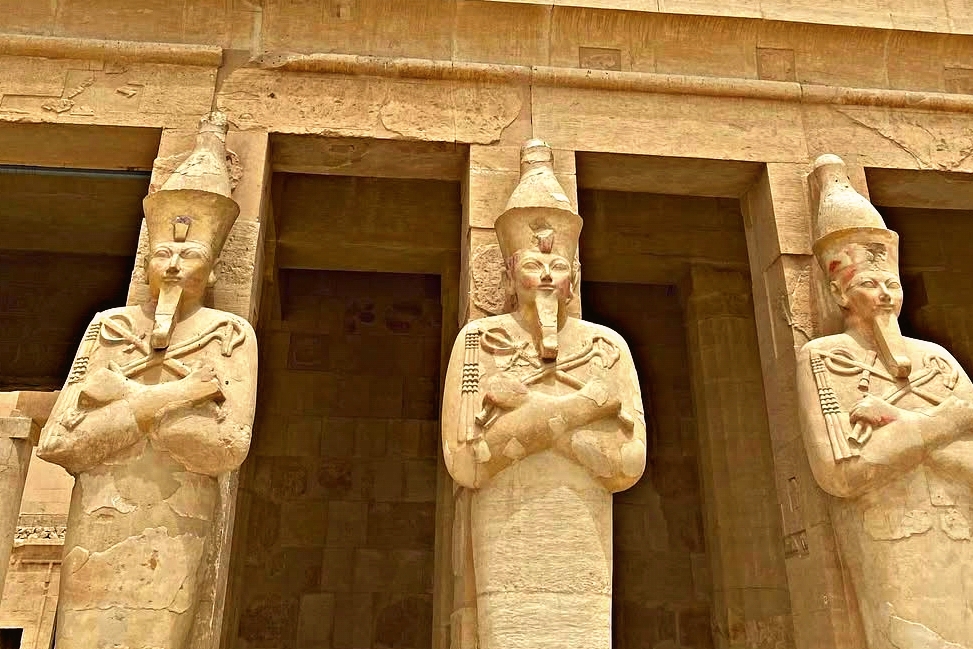
Hatshepsut’s reign, which lasted over two decades, was marked by peace, economic prosperity, and cultural enrichment. Unlike many of her predecessors, who focused on military conquests, Hatshepsut prioritized internal development and international trade.
Trade Expeditions
One of Hatshepsut’s most celebrated achievements was the reestablishment of trade routes that had lapsed during the Second Intermediate Period. Her most famous expedition was to the Land of Punt, a mysterious and resource-rich region believed to be located in the Horn of Africa.
The expedition brought back a wealth of exotic goods, including myrrh, frankincense, gold, ivory, and live myrrh trees, which were planted in the temple complex at Deir el-Bahri. These successful trade ventures not only enriched Egypt’s economy but also enhanced Hatshepsut’s reputation as a capable and visionary ruler.
Architectural Innovations
Hatshepsut is perhaps best known for her ambitious building projects, which rivaled those of any other pharaoh. Her most famous achievement is the mortuary temple at Deir el-Bahri, near Luxor. This grand structure, designed by her architect Senenmut, is a masterpiece of ancient Egyptian architecture.
The temple, nestled against towering cliffs, features terraces, colonnades, and beautifully decorated reliefs that depict her divine birth, coronation, and the expedition to Punt. It served as a place for the worship of Amun and as a monument to Hatshepsut’s reign.
Hatshepsut also undertook extensive renovations and expansions of temples across Egypt, including the Karnak temple complex. These projects not only demonstrated her devotion to the gods but also reinforced her authority and legacy.
Domestic Prosperity
Hatshepsut’s reign was a period of stability and economic growth. By focusing on trade and infrastructure, she ensured that Egypt thrived without the need for constant military campaigns. This allowed her to fund large-scale projects and maintain a well-fed and content population.
Hatshepsut’s Royal Lineage and Preparation for Power
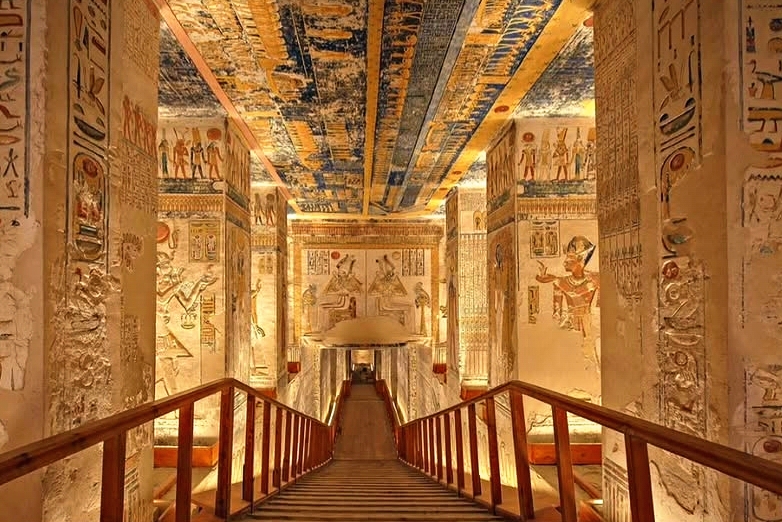
Hatshepsut’s rise to the throne was rooted in her royal lineage and the influence of her parents, Pharaoh Thutmose I and Queen Ahmose. Unlike many royal women of her time, Hatshepsut benefited from a privileged education, which included reading, writing, and religious training. This foundation allowed her to master the administrative and ceremonial roles expected of royalty, laying the groundwork for her eventual ascent.
Hatshepsut’s marriage to her half-brother, Thutmose II, further cemented her position in the royal hierarchy. As Great Royal Wife, she fulfilled her ceremonial duties while building alliances within the court. Importantly, this role allowed Hatshepsut to observe and learn the intricacies of governance, setting the stage for her later accomplishments as Pharaoh.
Transition from Queen to Pharaoh
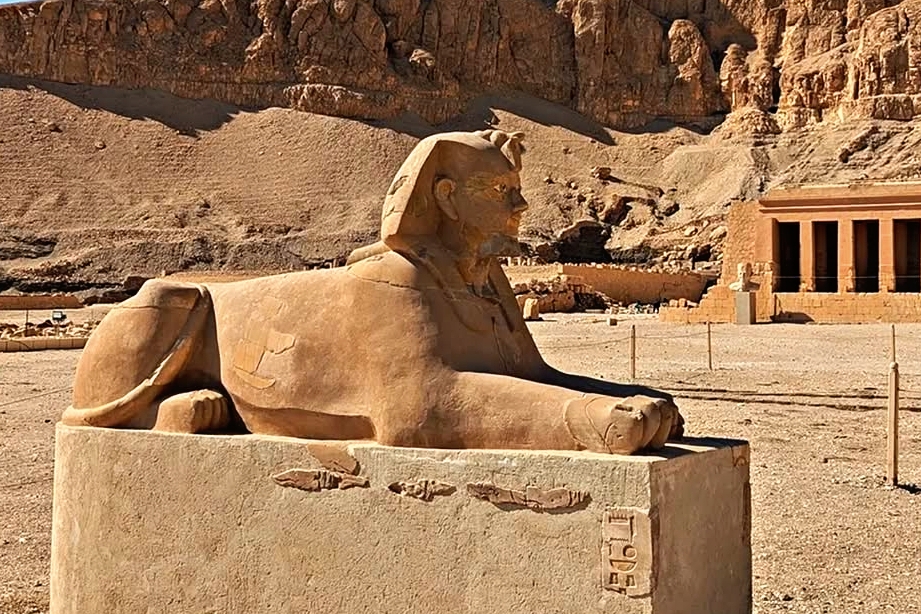
The death of Thutmose II left a political vacuum, as his heir, Thutmose III, was too young to rule. Hatshepsut initially stepped in as regent, managing the affairs of state on behalf of her stepson. However, she did not stop at acting as a caretaker ruler. Within a few years, Hatshepsut took the unprecedented step of proclaiming herself Pharaoh, effectively sidelining Thutmose III.
Hatshepsut’s bold move to seize power required more than ambition; it necessitated a well-crafted strategy to overcome resistance from conservative factions within the court. To legitimize her rule, Hatshepsut employed religious symbolism and propaganda. She claimed to be the chosen of Amun, the supreme god, and described her divine birth in temple inscriptions. This narrative not only solidified her position but also elevated her to a near-divine status in the eyes of the populace.
Challenges and Opposition
Despite her accomplishments, Hatshepsut faced significant challenges during her reign. As a female pharaoh, she had to navigate a society deeply rooted in patriarchal traditions. Some factions within the court likely resented her usurpation of power, and she worked tirelessly to legitimize her rule.
To mitigate opposition, Hatshepsut carefully emphasized continuity with her father’s reign and portrayed herself as a protector of Ma’at—the concept of cosmic order and justice central to Egyptian belief.
Hatshepsut’s Disappearance and Legacy
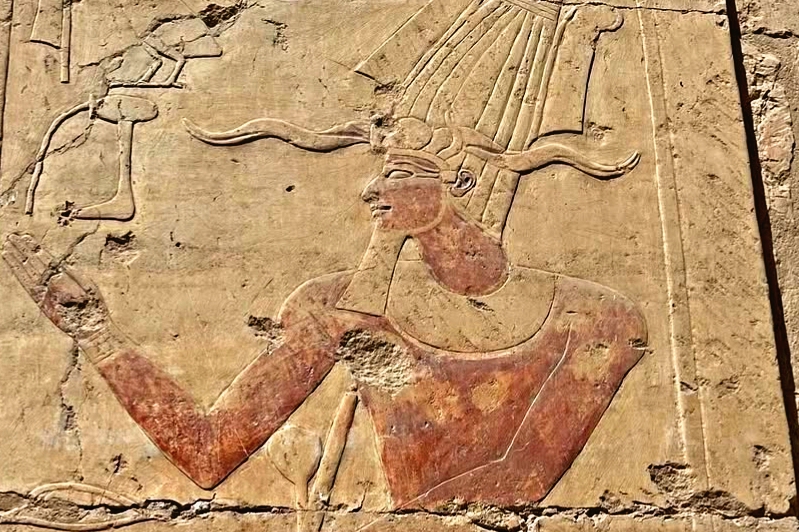
Hatshepsut’s reign came to an end around 1458 BCE, but the circumstances of her death remain unclear. After her death, Thutmose III, who had matured into a capable ruler, took full control of Egypt. In the years following her passing, many of Hatshepsut’s monuments and inscriptions were defaced or destroyed, an act that has puzzled historians.
Some scholars believe Thutmose III sought to erase Hatshepsut’s memory to solidify his lineage and restore traditional male-dominated rule. Others argue that the erasure occurred later, as part of broader political or religious reforms.
Despite these attempts, Hatshepsut’s legacy endured. Modern archaeologists have pieced together her story through surviving inscriptions, statues, and the remarkable architecture she left behind. Her achievements as a ruler and her ability to navigate the complexities of her time continue to inspire admiration.
Hatshepsut’s Impact on History
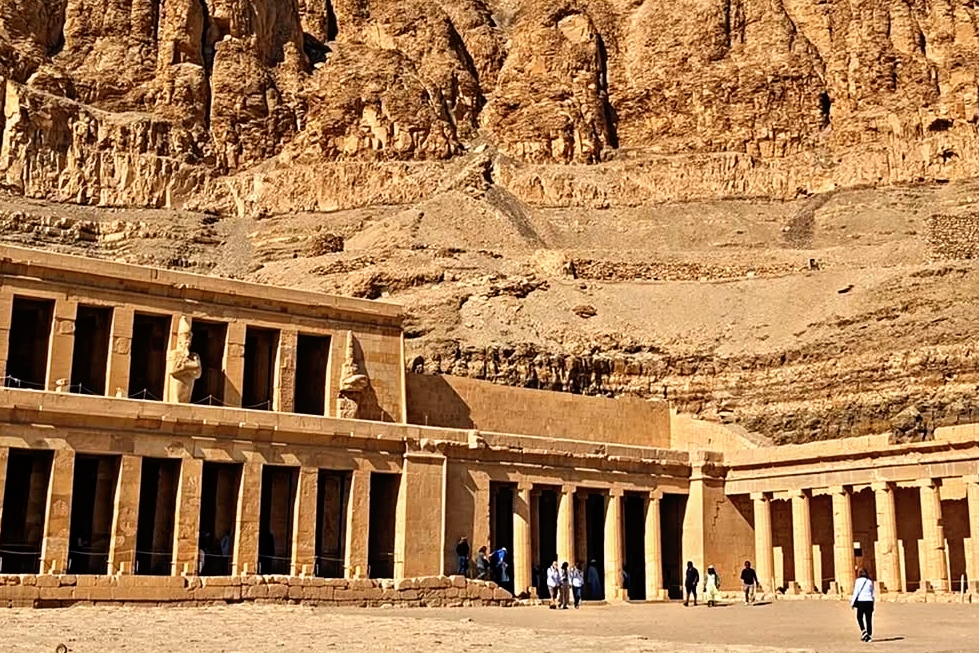
Hatshepsut’s story is a testament to her resilience, intelligence, and visionary leadership. She challenged the conventions of her time and demonstrated that effective leadership transcends gender. Her reign ushered in an era of peace and prosperity that benefited Egypt for decades.
In the modern era, Hatshepsut has become an icon of female empowerment, celebrated for her ability to rise above societal constraints and leave a lasting mark on history. Her mortuary temple at Deir el-Bahri and the wealth of artifacts associated with her reign serve as enduring reminders of her greatness.
As one of the few women to rule as Pharaoh, Hatshepsut’s name continues to resonate. She stands not only as a symbol of ancient Egypt’s grandeur but also as an example of how determination and vision can overcome even the most entrenched barriers.
Hatshepsut’s Building Projects: Architectural Marvels of the 18th Dynasty
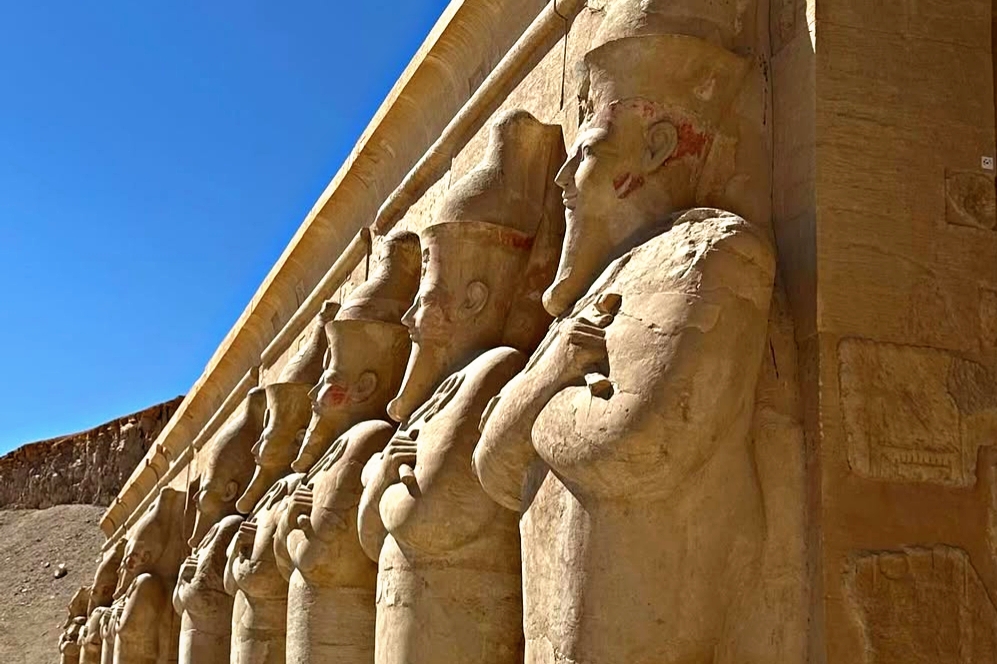
Hatshepsut’s reign is perhaps most vividly remembered through her architectural achievements. Unlike many rulers who focused on military expansion, Hatshepsut concentrated her efforts on building projects that showcased Egypt’s wealth and cultural sophistication.
The Mortuary Temple at Deir el-Bahri
The mortuary temple of Hatshepsut at Deir el-Bahri is a masterpiece of ancient Egyptian architecture. Designed by her chief architect and confidant, Senenmut, the temple is renowned for its symmetry, terraces, and colonnades, which harmonize with the surrounding cliffs.
The temple’s reliefs vividly depict key events of Hatshepsut’s reign, including her divine birth and the famed expedition to Punt. These visual narratives served as powerful propaganda, reinforcing her legitimacy and celebrating her accomplishments. The temple remains a testament to her vision and her dedication to immortalizing her legacy.
Enhancements at Karnak
Hatshepsut also left her mark on the Karnak temple complex, one of the most significant religious sites in ancient Egypt. She commissioned the construction of the Red Chapel, a small but intricately decorated shrine, and added numerous obelisks, including one that stood as the tallest in Egypt at the time. These projects not only honored the god Amun but also served as symbols of Hatshepsut’s power and devotion.
The Trade Expedition to Punt: Economic and Diplomatic Triumph
One of Hatshepsut’s most celebrated achievements was her successful trade expedition to the Land of Punt, an enigmatic region rich in natural resources. The journey, which involved a fleet of ships, is depicted in remarkable detail on the walls of her mortuary temple.
The expedition brought back a wealth of goods, including gold, ebony, ivory, and myrrh trees. The latter were particularly significant, as they were planted in the temple precinct, underscoring the prosperity Hatshepsut’s reign had brought to Egypt.
The Punt expedition was more than a commercial venture; it demonstrated Hatshepsut’s ability to foster international relations and expand Egypt’s influence through diplomacy and trade rather than military conquest.
Conclusion
Hatshepsut’s reign is a fascinating chapter in ancient history, showcasing her remarkable ability to lead and innovate in a male-dominated world. Her achievements in trade, architecture, and governance ensured Egypt’s prosperity and stability, while her story continues to inspire and captivate audiences thousands of years later.
The legacy of Hatshepsut, the unconventional Pharaoh, endures as a reminder of her extraordinary life and the indelible impact she made on Egypt and the world.

